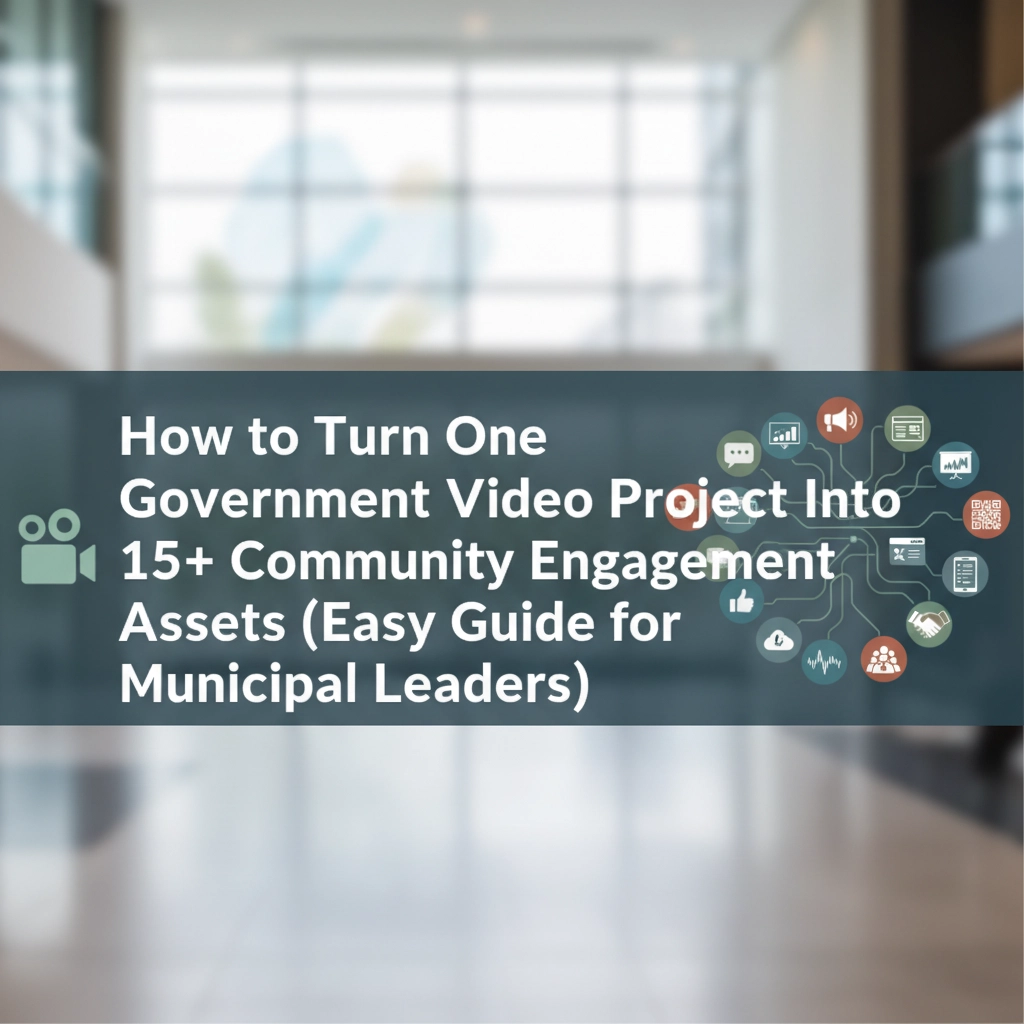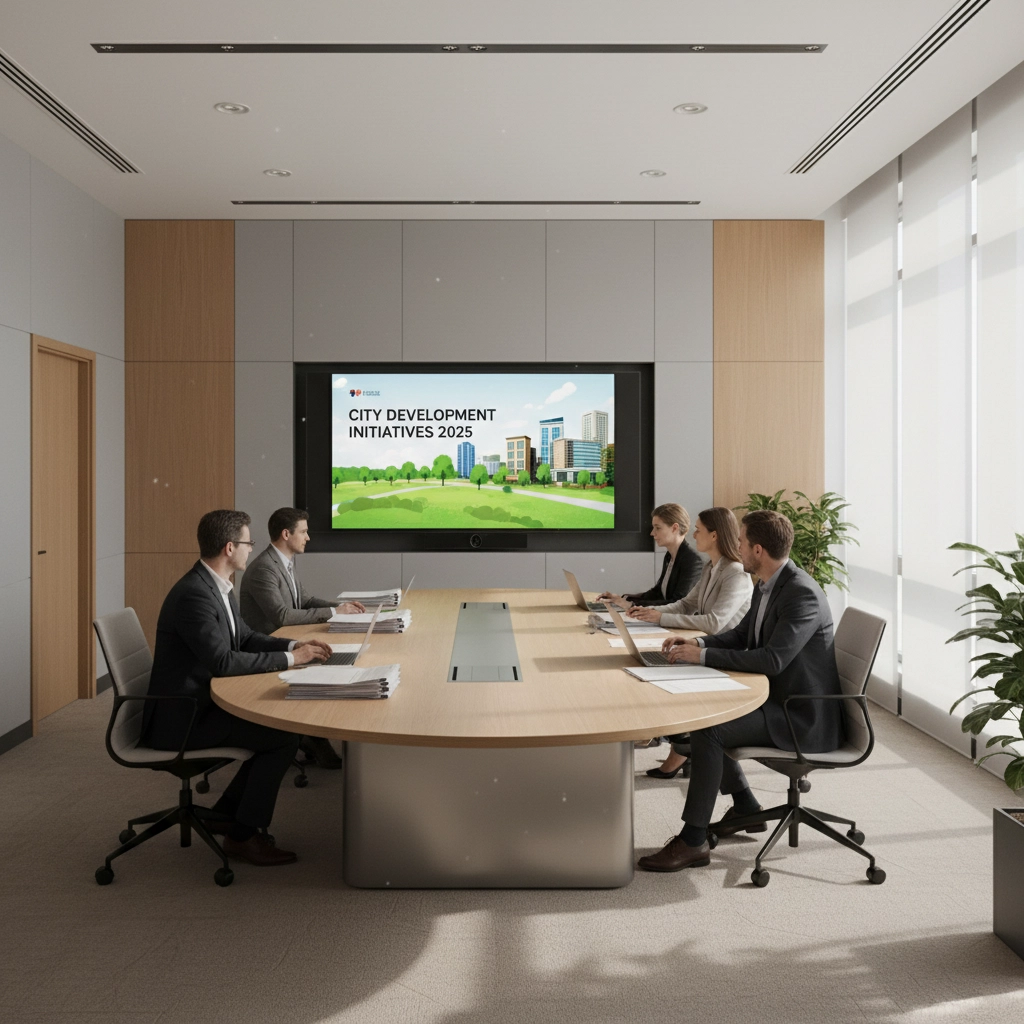How to Turn One Government Video Project Into 15+ Community Engagement Assets (Easy Guide for Municipal Leaders)

Picture this: Your municipality just wrapped up a beautiful video project about the new transit expansion. It cost $15,000, took weeks to coordinate, and looks absolutely stunning. But here's the thing, you post it on YouTube, share it on Facebook, maybe send it in a newsletter, and then... that's it.
Sound familiar? If you're nodding your head, you're not alone. Most municipal leaders treat video like a one-and-done deal, but guess what? You're leaving serious engagement (and budget value) on the table.
That single video project? It's actually a content goldmine waiting to be mined. With the right approach, you can turn one professional video into 15+ different community engagement assets that'll keep your residents informed, engaged, and connected for months. And the best part? It doesn't require a marketing degree or a massive team to pull off.
Let's dive into how you can squeeze every ounce of value from your next video investment.
Start With Smart Planning (Or You'll Kick Yourself Later)
Before you start chopping up that beautiful video like a Thanksgiving turkey, take a step back. The secret to successful repurposing isn't just about creating more content, it's about creating the right content for the right people.
First, get crystal clear on your goals. Are you trying to reach more young families about the new rec center? Want to get local businesses excited about downtown revitalization? Or maybe you're dealing with misinformation about the budget and need to set the record straight across multiple channels. Your goals will determine which assets you prioritize.
Next, take a good hard look at your original video. What are the golden moments? Maybe it's the mayor explaining the project benefits in under 30 seconds, or a resident testimonial that made everyone smile, or those stunning drone shots of the construction progress. These moments will become your most valuable repurposed assets.

Here's something most municipalities miss: different demographics consume content differently. Your 65+ residents might love a detailed blog post they can bookmark and reference, while parents in their 30s are scrolling Instagram at 9 PM looking for quick updates. Plan your repurposing strategy with these habits in mind, and you'll see way better engagement.
Your 15+ Asset Toolkit: From Audio Gold to Social Media Magic
Audio Assets That Work While People Work
Podcast Episodes: This one's a game-changer that most municipalities completely overlook. Extract that audio track and boom, you've got podcast content. "City Hall Conversations" or "Municipal Matters" could become your weekly audio series. Residents can listen during their commute, and trust me, there's something powerful about hearing the genuine passion in a council member's voice when they're talking about community projects.
Quick Audio Snippets: Got a 10-minute video? Pull out 2-minute audio clips of the most important points. These work great for social media stories or as voice messages in your municipal app.
Written Content That Actually Gets Read
The Ultimate Blog Post: Take your video transcript and transform it into a comprehensive blog post. But here's the key, don't just dump the transcript online. Add context, include links to related municipal resources, and optimize it so people can actually find it on Google when they're searching for information about your project.
FAQ Gold Mine: If your video answers common questions (and it should), turn those Q&As into a dedicated FAQ section. When residents call asking about construction timelines or budget details, your staff can direct them to these resources instead of explaining the same thing for the hundredth time.
Social Media Captions: Extract key quotes and statistics from your video to create compelling social media posts. That powerful statement about community impact? Perfect for a LinkedIn post targeting local business leaders.

Visual Content That Stops the Scroll
Infographics That Actually Inform: Take your video's key data points and turn them into shareable infographics. Construction timeline, budget breakdown, community benefits, these work incredibly well on Pinterest and Facebook, especially when residents want to share information with their neighbors.
Quote Graphics: Pull the most impactful statements from your video and create quote graphics. When the fire chief talks about improved emergency response times, or a local business owner shares how the project will help foot traffic, these moments deserve their own visual treatment.
Behind-the-Scenes Content: Don't forget about the footage you didn't use! Those candid moments during filming, the crew setting up shots, council members reviewing scripts, this humanizes your municipal work and shows the real people behind the projects.
Short-Form Video That Packs a Punch
TikTok and Instagram Reels: Yes, even municipalities can succeed on TikTok! That 15-second clip explaining how the new bike lanes will work, or a quick before-and-after of the park renovation: these bite-sized pieces can reach residents who'd never sit through a 10-minute video.
YouTube Shorts: Perfect for highlighting specific project phases or addressing common concerns. "Week 3 Construction Update" or "Top 3 Benefits of the New Transit Line": these short videos often get more views than your main content.
Webinar Teasers: Planning a town hall about the project? Use clips from your main video as promotional content to build attendance and set expectations.
Testimonial and Case Study Content
Resident Success Stories: If your video features community members, extract their testimonials as standalone content. These authentic voices carry more weight than any official statement, and they're perfect for building trust and addressing skepticism.
Project Milestone Celebrations: Turn key moments from your video into celebration posts. "Six months ago, this was just a proposal. Today, construction begins!" This type of content builds excitement and shows progress.

Your Step-by-Step Implementation Game Plan
Week 1: Content Mapping Watch your video with a notepad (old school, I know) and mark every valuable moment. Time stamps for key quotes, emotional moments, visual highlights, and technical explanations. This roadmap will guide all your repurposing decisions.
Week 2: Platform-Specific Optimization Here's where many municipalities mess up: they create one piece of content and blast it everywhere. Don't do this! That Instagram Reel needs different pacing, captions, and hashtags than your LinkedIn article. The extra effort is worth it because platform-native content performs dramatically better.
Week 3-4: Quality Over Quantity Production Start creating your assets, but don't rush. A few high-quality, well-targeted pieces will outperform dozens of mediocre ones. Use the tools you already have: most smartphones can create decent graphics and short videos, and free platforms like Canva can handle your infographic needs.
Ongoing: Strategic Distribution Don't dump all 15 assets online at once. Spread them out over 2-3 months. Monday could be your "Construction Update" Instagram post, Wednesday your "Did You Know?" Facebook fact, Friday your "Weekend Read" blog post link. This approach keeps your project top-of-mind without overwhelming your audience.
Pro Tips That'll Make Your Life Easier
Batch Your Work: Set aside one afternoon to create multiple assets rather than tackling them one by one. You'll work more efficiently and maintain better consistency across your content.
Create Templates: Develop templates for quote graphics, infographic layouts, and social media posts. Next time you produce a video, you'll cut your repurposing time in half.
Track What Works: Pay attention to which repurposed content gets the most engagement. If those behind-the-scenes photos always perform well, make sure to capture more during your next video shoot.
Involve Your Team: Your communications coordinator might excel at writing blog posts, while your summer student could be a TikTok wizard. Play to everyone's strengths and divide the repurposing tasks accordingly.

The Real-World Impact (And Why This Actually Matters)
When the City of Burlington launched their downtown revitalization video, they followed this exact approach. One professionally produced 12-minute video became 23 different assets over four months. The result? Their engagement rates increased by 340%, they reached 15,000 new residents across platforms, and: here's the kicker: they fielded 60% fewer repetitive questions at town halls because people could find information when and how they wanted it.
That's the power of strategic repurposing. You're not just creating more content: you're creating better communication pathways between your municipality and the people you serve.
The next time you invest in a video project, remember: you're not just buying one video. You're buying a content engine that can fuel your community engagement efforts for months. The question isn't whether you can afford to repurpose your content: it's whether you can afford not to.
Ready to maximize your next video investment? Let's talk about creating content that actually works for your community.
